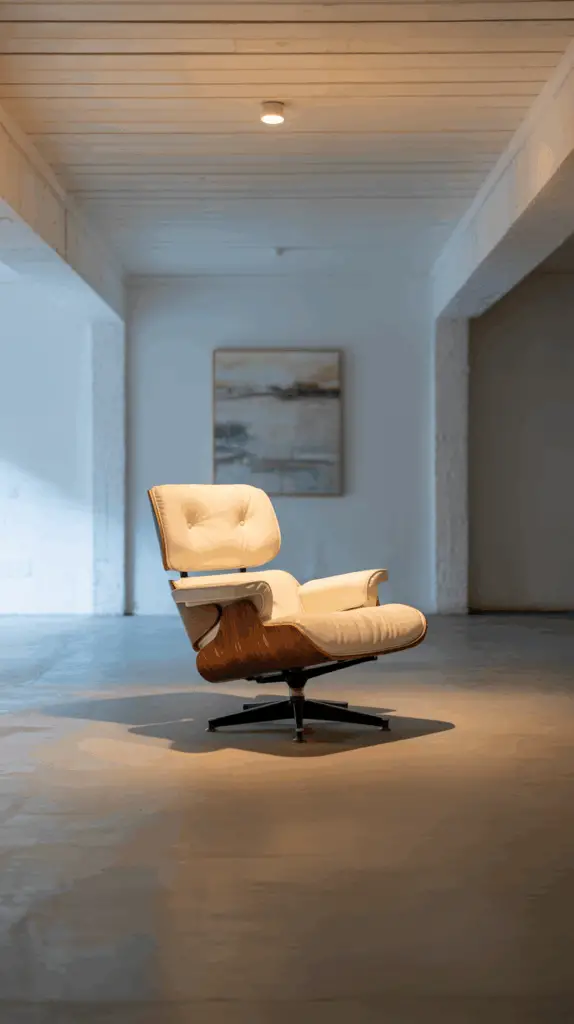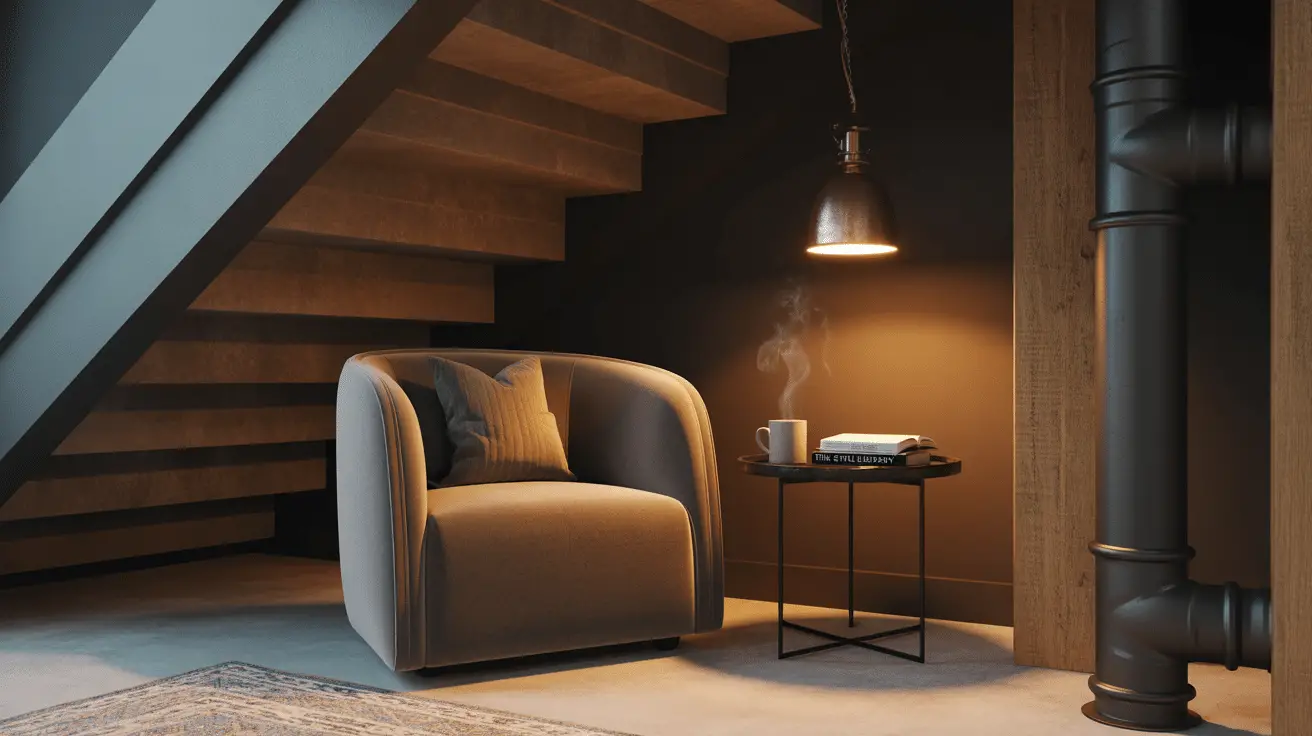Stylish Basement Ceiling Ideas with Minimal Materials for a Modern Makeover
Table of Contents
Introduction
Basements are often overlooked when it comes to design, especially ceilings. Many homeowners focus on floors, walls, or furniture while leaving the ceiling bare or unfinished. Yet, according to home renovation surveys, more than 70% of buyers say a finished basement adds significant value to a home—and a polished ceiling is key to creating that finished look. The good news? You don’t need to spend thousands of dollars on complex construction or luxury materials. With some creativity, you can achieve a stylish ceiling using minimal, cost-effective resources.
Why does this matter? A basement ceiling isn’t just about aesthetics—it also affects the overall feel of the room. Low-hanging pipes or exposed beams can make the space feel industrial and uninviting. On the other hand, thoughtful ceiling treatments can make your basement look taller, cozier, and more refined, whether you’re designing a home theater, game room, or guest suite.
In this article, we’ll explore stylish basement ceiling ideas that rely on minimal materials but maximize impact. From exposed beams and painted ceilings to fabric draping and lightweight paneling, these solutions combine practicality with beauty. You’ll also discover tips on choosing the right option for your budget, lifestyle, and design goals. By the end, you’ll see how even a modest ceiling transformation can completely change the atmosphere of your basement.
Exposed Beams and Industrial Charm
Leaving basement beams and ductwork exposed is not only practical but also stylish when done with intention. Instead of covering everything, embrace the raw, structural look by painting beams, pipes, and ceilings in a cohesive color. Matte black or soft white are popular choices, instantly transforming the space into a modern industrial retreat.
The beauty of this approach is cost efficiency—you’re not hiding imperfections, but rather celebrating them. Paired with Edison bulb lighting or track fixtures, exposed ceilings can create a loft-like vibe. To soften the look, consider adding area rugs, plush furniture, or textured wall treatments to balance the industrial aesthetic.
Table: Pros and Cons of Exposed Ceilings
| Advantage | Disadvantage |
| Budget-friendly solution | Can feel too cold if not balanced |
| Creates a loft-style vibe | Exposed pipes may need painting |
| Easy access to utilities | Requires thoughtful lighting |
Painted Ceilings for a Clean Finish
Sometimes the simplest solution is also the most effective. A painted basement ceiling instantly creates a cohesive and finished look without the need for extra materials. White paint is a classic choice for brightening low ceilings and reflecting light, while darker shades like navy or charcoal add drama and depth.
Painting works especially well for basements with lower ceilings, as it creates the illusion of height. It’s also versatile—you can paint both the ceiling and beams for uniformity, or highlight beams with a contrasting color for visual interest. The key is using durable, moisture-resistant paint designed for basements to ensure longevity.
Table: Color Options for Painted Ceilings
| Paint Color | Effect on Space | Best For |
| White | Bright, airy, spacious | Small basements |
| Light Gray | Subtle sophistication | Multi-purpose rooms |
| Charcoal/Black | Dramatic and modern | Home theaters |

Fabric Draping for a Soft and Cozy Atmosphere
For those seeking a unique and budget-friendly option, fabric draping offers both softness and style. Lightweight fabrics like muslin, linen, or canvas can be suspended across ceiling beams to conceal pipes while adding texture and warmth. This creates a tent-like effect, ideal for cozy entertainment areas or playrooms.
Fabric ceilings are not only stylish but also flexible—you can switch them out seasonally or update them as your décor changes. To ensure safety and longevity, choose flame-retardant fabrics and secure them tightly with hooks or wire. Accent lighting woven through the fabric can enhance ambiance, creating a magical, soft glow.
Table: Fabric Draping Breakdown
| Fabric Type | Visual Effect | Maintenance |
| Muslin | Casual and light | Easy to wash |
| Linen | Natural, textured | Medium care |
| Canvas | Rustic and bold | More durable |
Lightweight Wood Paneling for Warmth
Wood paneling instantly warms up a basement and makes it feel more like an extension of the main living area. Thin plywood, beadboard, or reclaimed planks can be installed directly on the ceiling to achieve a polished look with minimal material. Whitewashed or natural finishes enhance the Scandinavian or farmhouse aesthetic, while stained wood brings a more traditional charm.
Because wood adds texture, it can disguise imperfections while still feeling refined. This option is especially appealing for basements converted into living rooms, offices, or dining areas. While installation may take some effort, the materials themselves are often inexpensive compared to drywall.
Table: Types of Lightweight Wood Paneling
| Material | Style Effect | Cost Range |
| Plywood | Simple, modern | Low |
| Beadboard | Classic cottage feel | Moderate |
| Reclaimed Wood | Rustic, eco-friendly | Varies |
Drop Ceilings with a Modern Twist
Traditional drop ceilings often get a bad reputation for looking dated, but modern designs have redefined this option. Slim, lightweight tiles in sleek finishes like matte black, smooth white, or patterned textures can create a fresh, contemporary look. The added benefit is practicality—drop ceilings make it easy to access plumbing or electrical systems above.
Pairing drop ceilings with recessed lighting elevates the design, while mixing in acoustic tiles improves sound quality—perfect for media rooms. This solution is ideal for homeowners who want both style and utility without fully committing to drywall installation.
Table: Modern Drop Ceiling Options
| Tile Type | Style Impact | Best Use |
| Smooth White | Clean and simple | Multipurpose spaces |
| Matte Black | Sleek and dramatic | Home theaters |
| Textured | Adds visual interest | Living or game rooms |
Creative Lighting to Enhance Ceiling Design
Lighting isn’t just functional—it’s transformative. Even the simplest ceiling treatment can be elevated with the right lighting. Recessed lighting offers a sleek, modern finish, while pendant fixtures add personality and style. String lights, track lights, or LED strips can highlight beams, fabrics, or textures to create ambiance.
In basements with painted ceilings, strategically placed lighting prevents the space from feeling too dark. For fabric draping, warm-toned lights enhance softness, while in wood-paneled spaces, uplighting brings out natural grain patterns.
Table: Lighting Pairings for Ceiling Styles
| Ceiling Treatment | Lighting Choice | Effect |
| Painted Ceiling | Recessed Lights | Clean and bright |
| Fabric Draping | String Lights | Cozy and magical |
| Wood Paneling | Uplighting | Highlights texture |
| Exposed Beams | Track Lighting | Industrial chic |
Conclusion
Designing a stylish basement ceiling doesn’t require extravagant budgets or complex construction. With creative use of minimal materials—whether it’s embracing exposed beams, applying a fresh coat of paint, adding fabric drapes, or installing lightweight wood paneling—you can completely transform the look and feel of your basement. Each option offers its own charm, from industrial modern to cozy cottage, proving that even the most modest choices can deliver dramatic results. By combining ceiling treatments with thoughtful lighting, you can create a finished, welcoming basement space that enhances both function and style.

